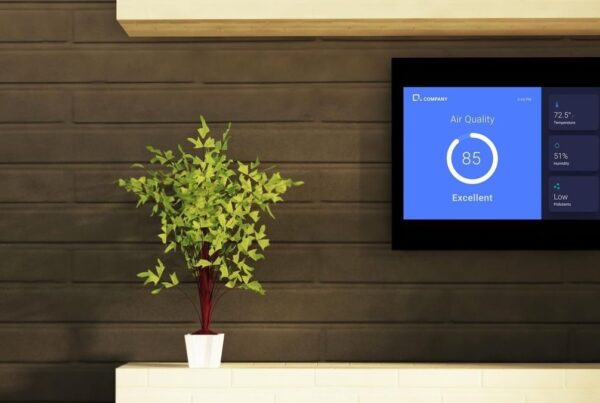
Prior to the outbreak of COVID-19, indoor air quality was not considered a pressing issue, but now the world has realized the enormous consequences it has on public health. In fact, non-industrial indoor air quality has been identified as one of the leading causes of public health concerns in the last 150 years.
As we begin to adapt to a world where COVID-19 is a continuing threat, having clean and well-circulated air will be fundamental for public well-being. The reality is that people spend most of their time indoors in residential or commercial buildings, and it is not always possible to achieve airflow, especially in the winter months.
There are currently two automation technologies available which can be deployed as indoor air quality monitoring systems: Wireless sensor technologies (WSN) and Internet of Things (IoT). Incorporating them as part of a targeted ventilation strategy would represent a great step forward in the fight against COVID-19.
How Prepared Are We for the Office Return?
It is unlikely that we are going to see pre-pandemic levels of occupancy for the foreseeable future, as very few people are going to be flooding back to the office. However, there still needs to be adequate preparation to ensure safe occupancy moving forward.
There will be a lower demand for space when office buildings open up, and so it is likely that many facility budgets will be cut. This will bring more focus to improving existing systems to ventilate efficiently. The only problem is that building operators do not have clear guidance from the US government on strategies to open up safely; all they can do is follow the updated guidelines from ASHRAE.
If a return to working in an office is going to be successful, it will be crucial to monitor air quality on a real-time basis. This can be done by utilizing the latest technologies for data access and setting up alerts which can be sent to users to take appropriate steps for handling poor ambient air quality.
What Kind of Automated Solutions Are Available?
The combination of wireless sensors and IoT technology mentioned above can collect, process and transmit data to revolutionize air quality monitoring. These tools use mobile computing architectures to provide real-time data access through web servers or mobile applications.
Real-time monitoring has to be paired with efficient ventilation, and bipolar ionization (BPI) has the potential to be particularly effective in this way. BPI eliminates particulate matter by creating charged ions which attach themselves to particles and destroy a virus on a molecular level. BPI can also be integrated into a building automation system to make use of targeted ventilation.
Targeted ventilation is a useful automated strategy which sends ventilation to occupied rooms such as a school classroom about to host a scheduled class. It only requires an occupancy sensor and a system that can monitor and control information. The beauty of pairing targeted ventilation with smart sensor monitoring is that it enables a complete overview of air quality. For example, if increasing ventilation leads to more pollutants entering a building, smart sensors can recognize this and determine what actions need to be taken.
These types of solutions are both cost-effective and relatively easy to implement. They can be installed on existing equipment, saving capital expense and limiting disruption to the facility and the occupants.
What COVID-19-Related Challenges Remain?
The main challenge for buildings is implementing these technologies on a widespread basis. The solutions outlined above demonstrate the ideal scenario, but the fact remains that many IAQ technologies on the market do not have trigger warnings for reduced air quality scenarios, which should be mandatory.
When tackling COVID-19, it is also vital to bear the humidity of the environment in mind. In dry air, droplets evaporate quickly. This means they fall more slowly, remain in the air for longer, and travel further. Consequently, the virus is far less dangerous in lower humidity areas, and it is vital to use more resources to monitor and ventilate in higher humidity areas.
It may seem obvious, but it is also worth noting that there is no technology which currently exists which is specifically designed to eliminate COVID-19 airborne particles. However, there is data suggesting that real-time monitoring can assess viral transmission risk and load. This is going to be a key metric in determining how safe a building is.
Given that many businesses will lack funding for facilities, automated solutions must focus on using existing equipment as much as possible. Monitoring air quality in real-time and using state-of-the-art technology to ventilate buildings efficiently will create a safe environment to live and work during the pandemic and beyond.
John Bohlmann is the founder of HawkenAQ.


